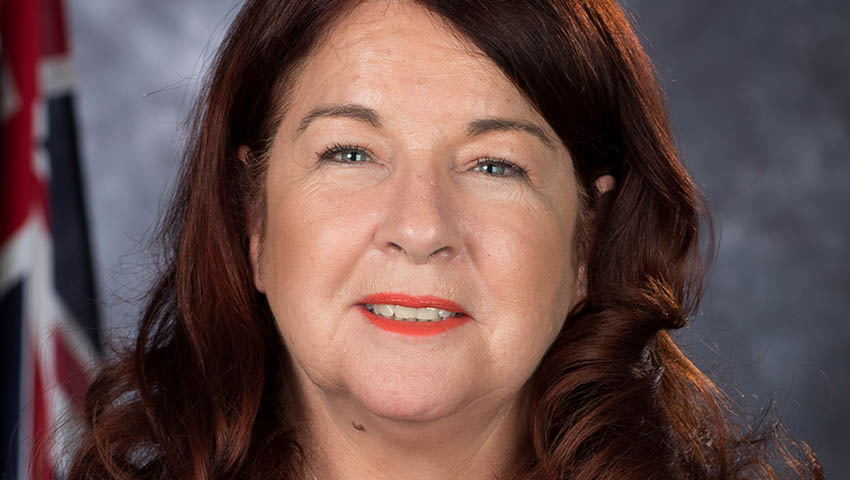Defence Industry Minister Melissa Price discusses the wide-ranging benefits of building the nation’s sovereign industrial capability.
To continue reading the rest of this article, please log in.
Create free account to get unlimited news articles and more!
Investment in military capability doesn’t just strengthen our nation’s security.
It can drive our economy even further and faster than it has to this point in time – but only if we design and build the vehicle we’re travelling in, rather than simply fuelling it.
That is why the partnership between Defence and Australia’s defence industry is becoming more important.
In an age of rapid technological progress and unsettling strategic challenges, we simply cannot afford to make assumptions about the ADF’s capability edge.
We must work now to create an environment that allows us to sharpen that edge well into the future, and where it counts most.
To this end, industry is more than a fundamental input to ADF capability, as recognised by the 2016 Defence White Paper.
It is an indispensable partner.
If we are to enhance our self-reliance in meeting the objectives set out in the 2020 Defence Strategic Update, Australia must have a more capable, resilient and sovereign defence industrial base.
That is why the Morrison government has committed to building Australian industrial capability in ways that better serve the ADF’s most critical needs.
Because as we help industry to deliver the capability the ADF needs, we not only strengthen the security and stability our economy needs, we also help grow our economy.
Seven out of every 10 dollars spent by Defence are now spent in Australia. And we are working to ensure that figure increases as the government’s $270 billion, 10-year investment is expended.
Currently, some 70,000 Australian workers benefit from our investment in Defence capabilities.
But that figure is likely to be much higher when we consider Defence’s total investment across the country, including capability sustainment, people and infrastructure.
Clearly, what is good for our security is also good for our prosperity.
But as our strategic environment becomes more complex, it is vital that we look beyond the benefits that Defence work brings to the economy, and towards the benefits it brings to strengthening our industrial base.
There is currently much debate about how we lock in Australian businesses’ share in major Defence projects.
But Australian industry content in any Defence project – that is, the percentage of contract expenditure or the total dollar value that Australian business reaps – only tells part of this story.
Our industry must gain capabilities that are no less long-term and strategic than the new capabilities it is delivering to the ADF.
This will require more than revenue to sustain businesses, as important as this has been, as we recover from the impacts of the COVID-19 pandemic.
In response to reduced strategic warning times and supply chain vulnerabilities, we need to grow capabilities that give our industry a qualitative edge, not just a quantitative share.
This means driving and commercialising Australian innovation, in addition to securing technology transfers to Australia.
It means embedding new skills and expertise. And it means getting more of our smaller businesses into the supply chains of prime companies and new export markets.
Boeing Australia’s Loyal Wingman is an excellent example of an Australian-designed, developed and manufactured capability.
By engaging Australian businesses in the build of the first Australian military aircraft in half a century, Loyal Wingman expands the high-tech skills of our workforce, creates supply chain and export opportunities, and opens up long-term job prospects across the country.
Australia’s size shouldn’t temper our ambitions.
In fact, we must heed and learn from the experiences of even smaller countries in how we go about configuring a more responsive sovereign industrial base.
We don’t have to do it all. Not every capability must be Australian-owned; the Australian industrial base simply isn’t large enough to support every single one of Defence’s capabilities.
Instead, we have to focus industrial development on where our priorities and comparative advantages lie. We build on our strengths – and punch above our weight.
That is the logic behind the Sovereign Defence Industrial Capability Priorities and the implementation plans we’ve issued to help guide industry’s planning and investment.
These priorities highlight where Australian industry needs to step up, if it is to enable the ADF to shape, deter and respond.
The Morrison government is committed to maximising Australian industry participation in Defence projects.
But that commitment cuts both ways: Australian industry needs to scale up its quality, innovation and competitiveness.
There is no single pathway for achieving this.
That is why we are working with Defence and across government to identify new, integrated pathways.
These include inserting greater clarity in contractual requirements, accelerating transition from innovative concepts to cutting-edge capabilities, identifying opportunities for scaling up manufacturing, and breaking down barriers to more seamless industrial base co-operation with the US.
Ultimately, our success will be measured by how competitive our businesses become.
For Defence, that means innovation that not only meets the ADF’s capability choices, but also shapes and guides those choices.
Melissa Price is the Minister for Defence Industry and member for Durack in Western Australia.

 Login
Login







